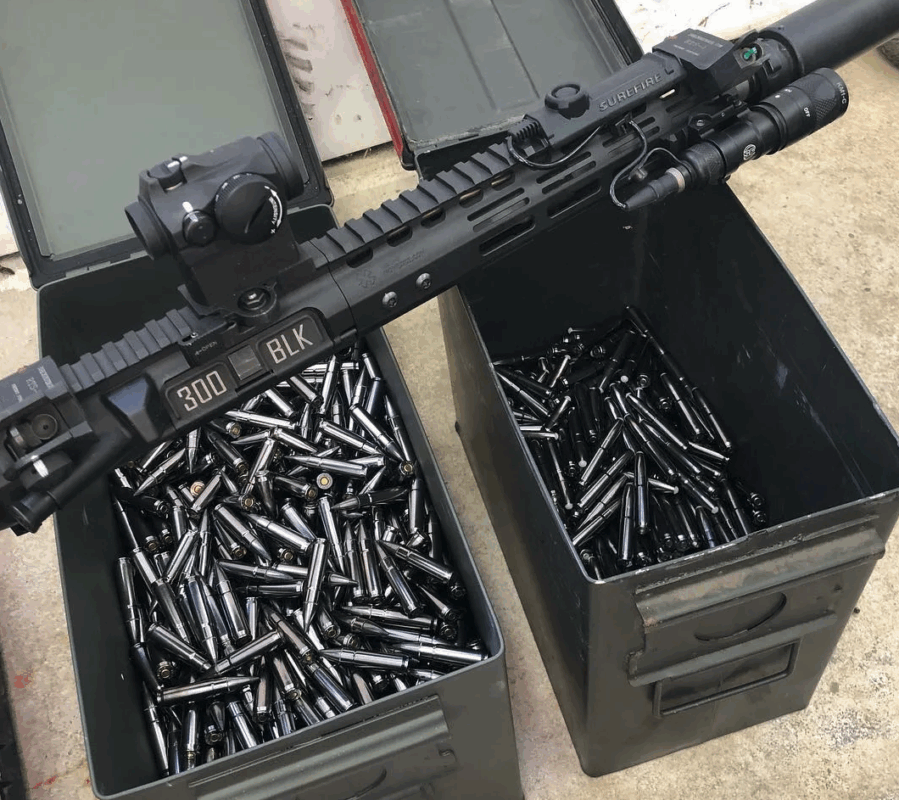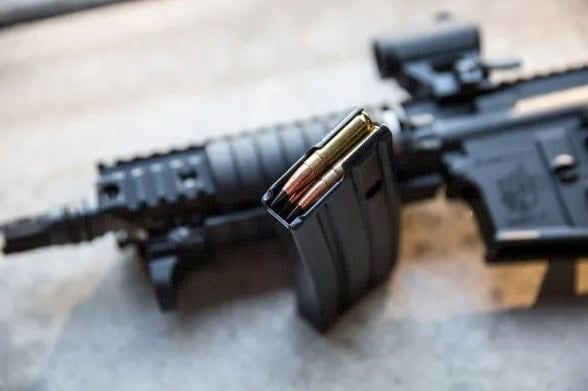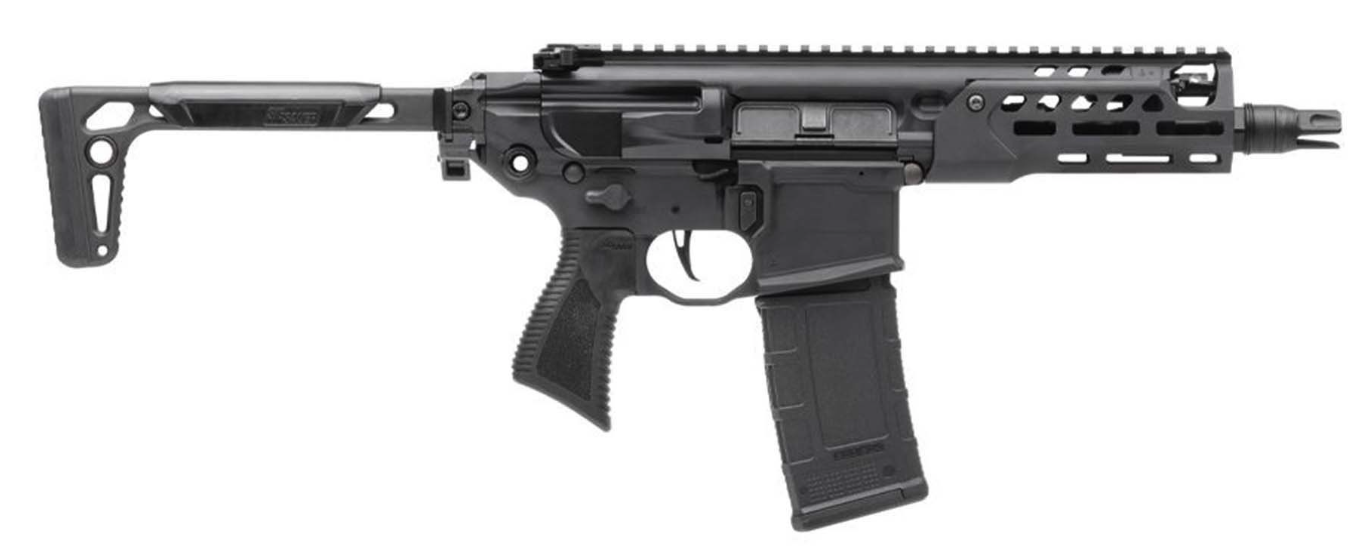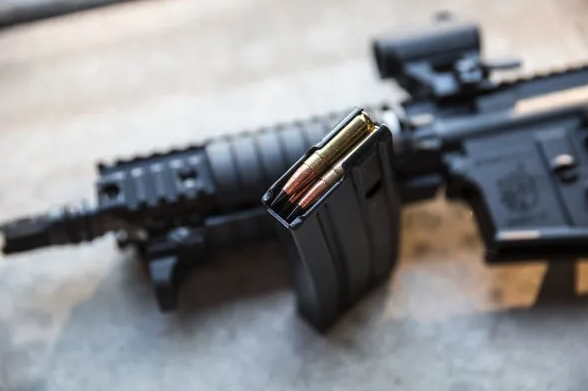AR Rifle
.300 Blackout vs. 5.56mm Rifles: Choosing the Right AR-15 Cartridge for Your Needs
Table of contents
- The Origins of .300 Blackout and 5.56mm NATO
- Performance Characteristics and Ballistics
- Practical Applications: Hunting, Defense, and Tactical Use
- Barrel Length and Platform Considerations for Rifles
- Suppression: Stealth and Performance
- Choosing the Right Cartridge for You
- Why Shop at AR15Discounts.com?
- Final Thoughts
When it came time to build the ultimate home defense rifle that would be a super short-barreled SBR, for me, the choice was simple…an 8″ 300 Blackout. That decision was based on my personal situation, but what about yours? At AR15Discounts.com, we understand that selecting the perfect cartridge for your AR-15 is a critical decision, whether you’re gearing up for hunting, home defense, tactical operations, or range time.
Two of the most popular choices for AR-15 rifles are .300 Blackout and 5.56mm NATO. Each cartridge brings distinct advantages to the table, tailored to specific scenarios, environments, and preferences. In this in-depth comparison, we’ll explore the origins, performance, applications, and practical considerations of these rounds to help you make an informed choice for your next build or upgrade, all while ensuring you can find the best components at AR15Discounts.com.
The Origins of .300 Blackout and 5.56mm NATO
The 5.56mm NATO cartridge has long been a cornerstone of the AR-15 platform. Developed in the late 1950s and adopted by the U.S. military, it was designed to deliver high velocity, low recoil, and effective performance at extended ranges. Its lightweight bullets, typically ranging from 55 to 77 grains, make it a versatile choice for military, law enforcement, and civilian applications. The 5.56mm thrives in scenarios requiring precision and reach, cementing its status as a go-to round for general-purpose shooting.
In contrast, the .300 Blackout has a more specialized origin story. It evolved from the .300 Whisper, a wildcat cartridge developed by J.D. Jones in the early 1990s. Jones aimed to create a .30-caliber round that could deliver the stopping power of an AK-47’s 7.62x39mm cartridge while functioning reliably in an AR-15 platform. However, the .300 Whisper faced challenges, including unreliable feeding in AR-15 magazines due to the shape and size of traditional .30-caliber bullets. These bullets were either too short to fully utilize magazine capacity or had an ogive (the curve of the bullet’s nose) that didn’t feed smoothly through standard AR-15 feed ramps.
The turning point came when the U.S. Navy Special Warfare Group approached Advanced Armament Corporation, after its acquisition by Remington, to refine the concept. The goal was to create a cartridge that could deliver AK-47-like power in an M4-style rifle, with the added benefit of subsonic performance for suppressed shooting. The result was the .300 Blackout, a cartridge optimized for reliability, versatility, and compatibility with AR-15 magazines and bolts. By addressing the feeding issues and leveraging modern bullet designs, .300 Blackout became a commercial success, appealing to both military operators and civilian shooters.
Performance Characteristics and Ballistics
The performance of .300 Blackout and 5.56mm NATO rifles diverge significantly, driven by their design goals and bullet characteristics. The 5.56mm NATO is a high-velocity round, with muzzle velocities often exceeding 3,000 feet per second from a 16-inch barrel. Its lightweight bullets, such as 55-grain FMJ or 77-grain match loads, produce flat trajectories, making it ideal for engagements at 200 yards and beyond. When paired with a 14.5-inch or 16-inch barrel, the 5.56mm delivers excellent accuracy and terminal performance at distance, with heavier 75 or 77-grain loads offering improved energy transfer for targets at longer ranges.

Conversely, .300 Blackout is a heavier, slower-moving round, typically firing bullets between 110 and 220 grains. Its supersonic loads, such as the Barnes VOR-TX 110-grain TAC-TX, achieve muzzle velocities around 2,300 feet per second from 10.5-inch barreled rifles, providing substantial stopping power at close to moderate ranges (under 200 yards). Subsonic loads, often 200 grains or heavier, travel below the speed of sound (approximately 1,100 feet per second), making them exceptionally quiet when paired with a suppressor. However, these subsonic rounds sacrifice velocity and range, with significant bullet drop beyond 100 yards, limiting their effective range compared to 5.56mm.
The choice between these cartridges for rifles often comes down to engagement distance. As one expert noted, the key question is, “What is the distance of the engagement you’re most likely to encounter?” For open fields or scenarios where targets are 200 yards or farther, the 5.56mm’s high velocity and flatter trajectory make it the superior choice. Its ability to maintain energy and accuracy at distance is unmatched in the .300 Blackout’s arsenal. However, in closer quarters, such as urban environments or dense woods, the .300 Blackout’s heavier bullets deliver a harder-hitting impact, offering greater stopping power for threats or game within 150 yards.

Practical Applications: Hunting, Defense, and Tactical Use
When it comes to practical applications, both cartridges shine in different contexts. The 5.56mm NATO is a proven performer for general-purpose shooting in rifles. Its low recoil and high magazine capacity make it a favorite for competitive shooting, training, and home defense in open environments. For hunting, it’s effective against smaller game, such as varmints or coyotes, but its lighter bullets may lack the necessary energy for larger animals like whitetail deer or feral hogs, especially at longer ranges. In tactical scenarios, the 5.56mm’s versatility across barrel lengths (from 10.5 inches to 20 inches) makes it a reliable choice for law enforcement and military units needing a balance of range and maneuverability.
The .300 Blackout, by contrast, was built for specialized roles. Its .30-caliber bullets excel in hunting medium-sized game, such as whitetail deer or feral hogs weighing under 200 pounds. The heavier projectiles, like the 110-grain Barnes TAC-TX, provide superior terminal performance in rifles, making it a top choice for hunters seeking quick, ethical kills within 150 yards. In defensive scenarios, the .300 Blackout’s stopping power is a significant advantage in close-quarters engagements, particularly when using short-barreled rifles (SBRs). Its compatibility with subsonic ammunition also makes it a favorite for suppressed setups, offering near-silent operation for tactical teams or discreet home defense.
One common misconception 300 Blackout rifles are that it’s only useful when suppressed. While it’s true that subsonic .300 Blackout rounds paired with a suppressor create an exceptionally quiet platform, the cartridge is far from “useless” without one. Supersonic .300 Blackout loads deliver impressive performance for hunting or defense from rifles, rivaling the power of larger calibers in a compact AR-15 package. This versatility makes it a compelling option for shooters who want flexibility without sacrificing firepower in their rifles

Barrel Length and Platform Considerations for Rifles
Barrel length plays a critical role in the performance of both cartridges in rifles. For 5.56mm NATO rifles, longer barrels (14.5 inches or 16 inches) maximize velocity and range, making them ideal for open environments or precision shooting. A 10.5-inch barrel, while still effective, sacrifices some velocity, reducing its effective range to around 100-150 yards. This makes short-barreled 5.56mm rifles better suited for close-quarters or vehicle-based operations, though they remain less potent than their longer-barreled counterparts.
The .300 Blackout, however, thrives in shorter barrels. A 10.5-inch barrel strikes an excellent balance for both supersonic and subsonic loads, offering maneuverability without compromising too much ballistic performance. This barrel length has been adopted by elite military units for its versatility in mixed environments, where engagements may range from point-blank to 150 yards. Shorter barrels, such as 8 or 9 inches, are also viable for .300 Blackout, particularly with subsonic ammo, though they limit effective range to 50-100 yards. As one expert reflected, “If that target at 200 yards is shooting back, you’ll wish it was farther away.” For scenarios requiring more distance, the 5.56mm’s longer barrels are preferable, but for close-in work, the .300 Blackout’s short-barrel prowess is unmatched.

Suppression: Stealth and Performance
Suppression is where the .300 Blackout truly sets itself apart. Designed with suppressors in mind, it excels with subsonic ammunition, producing minimal noise for stealthy operations. This makes it a favorite for special forces, law enforcement, and hunters who value discretion. The ability to switch between subsonic and supersonic loads without changing magazines or bolts adds to its appeal, offering shooters the flexibility to adapt to different scenarios.
While 5.56mm rifles can be suppressed, its high-velocity rounds remain loud even with a suppressor, limiting its stealth capabilities. Subsonic 5.56mm ammunition exists but is uncommon and less practical, as it sacrifices the cartridge’s primary strength: velocity. For shooters prioritizing suppressed shooting, .300 Blackout is the clear winner, but its unsuppressed performance with supersonic rounds is equally impressive, debunking the notion that it’s a one-trick pony.
Choosing the Right Cartridge for You
So, which cartridge should you choose? It depends on your priorities and environment. If you need a lightweight, high-velocity round for engagements at 200 yards or beyond, the 5.56mm NATO is the better choice. Its affordability, availability, and flat trajectory make it ideal for range shooting, competition, or scenarios where distance is a factor. A 14.5-inch or 16-inch barrel paired with 75 or 77-grain ammo ensures maximum performance for these applications.
If your focus is on close-quarters stopping power, hunting medium game, or suppressed shooting, the .300 Blackout is hard to beat. Its heavier bullets deliver devastating energy within 150 yards, making it a top pick for whitetail deer, feral hogs, or home defense in confined spaces. A 10.5-inch barrel offers the best of both worlds, balancing maneuverability and power, while suppressors enhance its stealth capabilities. The Barnes VOR-TX 110-grain TAC-TX round is a standout choice for defensive or hunting applications, offering reliable expansion and penetration.
Consider your environment as well. In open terrain, the 5.56mm’s range gives you an edge. In dense woods or urban settings, the .300 Blackout’s punch is more effective. For shooters who face varied scenarios, a 10.5-inch barrel in either caliber provides versatility, as evidenced by its use in high-stakes military applications.
Why Shop at AR15Discounts.com?
At AR15Discounts.com, we’re committed to helping you build the perfect AR-15 for your chosen cartridge. Whether you’re leaning toward 5.56mm or .300 Blackout, we offer a wide range of high-quality barrels, uppers, magazines, optics, and suppressors to optimize your setup. Our 10.5-inch barrels are perfect for versatile builds, while our 14.5-inch and 16-inch options cater to 5.56mm enthusiasts seeking maximum range. Plus, our competitive prices ensure you get the best value without compromising on quality.
Final Thoughts
Neither .300 Blackout nor 5.56mm NATO is inherently “better”—each excels in its intended role. The 5.56mm is your go-to for long-range precision, affordability, and general-purpose shooting. The .300 Blackout shines in close-quarters, hunting, and suppressed applications, offering unmatched stopping power and versatility. By understanding your needs and environment, you can choose the cartridge that best suits your mission. Visit AR15Discounts.com today to explore our extensive selection of AR-15 parts and accessories, and build the rifle that’s ready for anything.

